Sometimes you just feel an instant affinity with a new place as soon as you arrive. It was like that for us in Taipei.
It is a huge city, both ultra-modern and very traditional at the same time. The people are so welcoming, helpful and friendly, it’s difficult not to feel at home here. Everywhere is clean, everything works. The food is sublime and so cheap – it must be really hard to eat badly in Taipei, even if on a tight budget.
We stayed in a hotel close to Taipei Main Station, 35 mins by high speed train from Tayouan airport. It is Taiwan’s major transport hub not just for the city but the whole country.


Trains are a great way of reaching other parts of the country. The system is well used and we found it necessary to book a few weeks in advance, at least for Hualien. Easy to book online and pick up the tickets at the station – beats flying any day! The MRT is the most amazing city transport system. Better than any other city we have visited (except perhaps Tokyo?)

We originally planned to pack a lot in to our four days but hadn’t taken into account the intense heat of high summer. It was Early July and as temperatures were hitting the high thirties, we decided to reassess our plans and felt that less, not more, would at least be more comfortable even if we didn’t get to see all we wanted.
To deal with temperatures we tended head out in the mornings and evenings, whizz around on the MRT wherever possible (the air conditioning in the carriages was a very welcome respite from the heat!). We also used a few buses for the places where the MRT didn’t reach which were surprisingly easy to navigate.
We know we missed a lot of key sights in our brief time in Taipei but regard this as an excellent reason to return when its cooler!
Here are a few of the places we did manage to get around:
Chiang Kai-shek Memorial Hall

Surely one of Taipei’s most impressive sights. Completed in the 1980s as a shrine to the General who effectively created modern Taiwan after leading the Kuomintang to defeat against Mao’s victorious communists and escaping to the island then named Formosa.
The hall is situated to one side of the huge Liberty Square” and is said to resemble the Temple of Heaven in Beijing.
Facing the Memorial Hall, are the blue arches of massive and imposing main gate. Completing the square, on the opposing sides are the huge National Theatre and National Concert Halls.
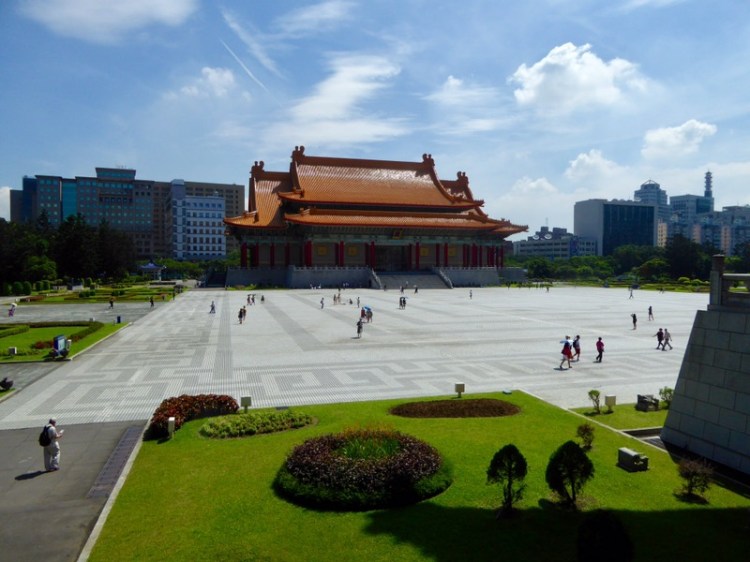
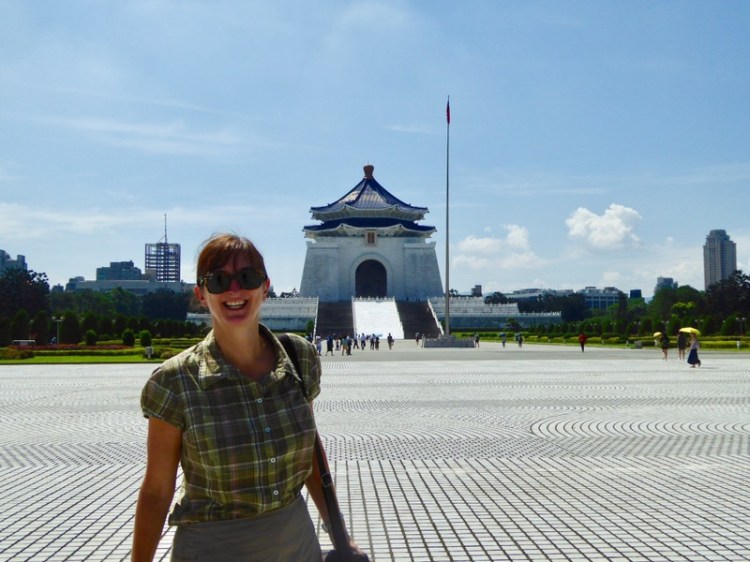
We visited on a Saturday when the square was buzzing with groups of people, young and old, taking part in a variety of activities. The older people practicing their Tai Chi, the young men rehearsing their ceremonial drumming. There were even a few break-dancers.
Best of all though was the large group of girls in green uniforms practising their rifle drills to a very eclectic soundtrack – including, somewhat bizarrely, the theme tune to “The A Team”. One poor girl dropped her rifle and had it immediately removed by the instructor and then had to complete the rest of the drill with an imaginary rifle! She seemed completely unfazed though.
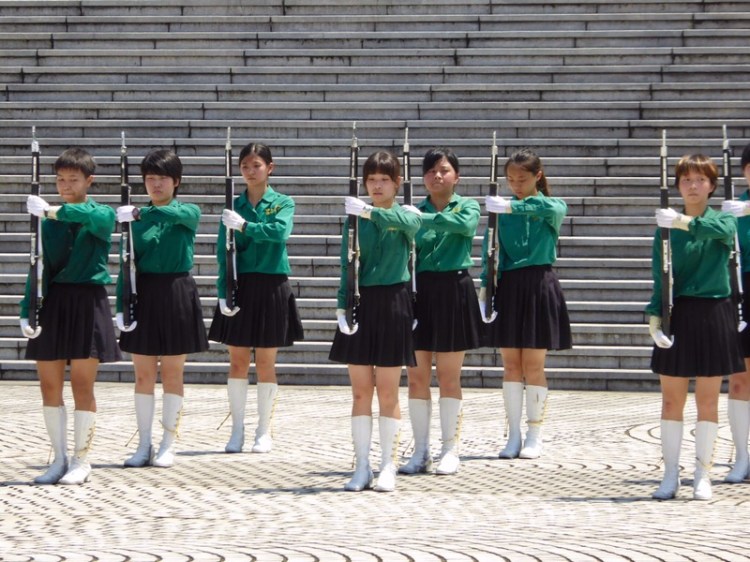
After watching the girls and their rifle drill for some time, we climbed the 89 granite stairs to the Memorial Hall itself. Although it seems like a mausoleum, Chiang Kai Shek is not actually buried here. Instead it contains a giant bronze statue of the seated General. It is very imposing.
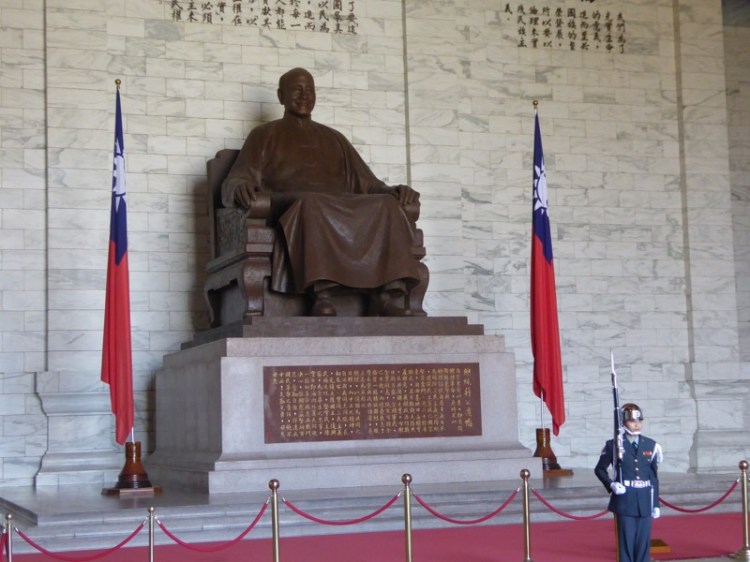


Inscribed on the wall behind his statue apparently are the three elements of Chiang’s political thought, adapted from the renowned teacher, philosopher and doctor, Sun Yat-sen’s “The Three Principles of the People”:
* Science
* Democracy
* Ethics
By coincidence we arrived at the changing of the guard ceremony. Very smart soldiers, with gleaming steel helmets and razor-sharp bayonets, were parading up and down in front of the statue demonstrating some pretty sharp moves!
The hall was very crowded with Chinese and Taiwanese tourists who clearly knew the right time to arrive. They also probably knew about the exhibition halls and art galleries on the ground floor below the hall that we completely missed, probably due to us being completely overawed by our surroundings. oops!


Leaving the hall, we were rewarded with a magnificent panorama of the square below. It seems this is a favourite place for selfies amongst the Taiwanese.

Raohe Street Market

Having heard a lot about the street food and night markets in Taipei, we chose Raohe Night Market for our first foray into Taiwan’s very varied cuisine. A few stops to Songshan station on the amazingly efficient MRT (we were there really impressed with the public transport here!) and we arrived in maybe 15 mins.
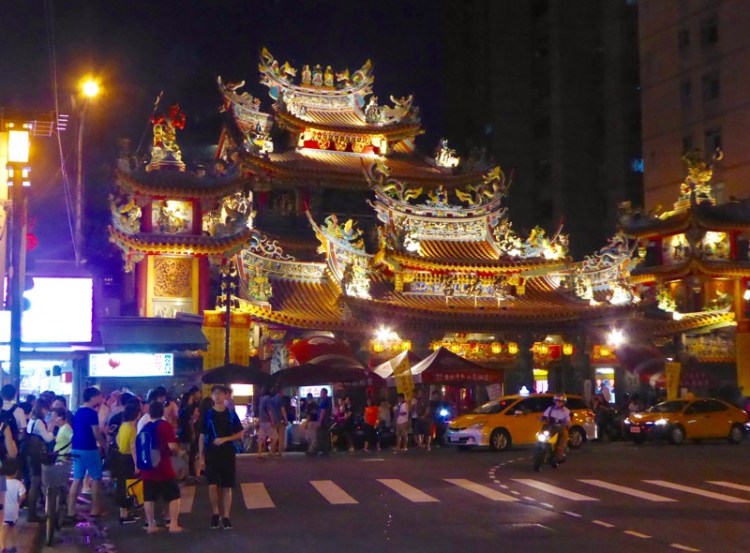

The Night Market itself stretches from around 0.5 km between Tayou Street and Bade St, along from the dramatically lit temple ( the name escapes me) along Raohe St.
We stopped at the first stall, Fuzhou Shizu Pepper Buns for some of their famous buns, stuffed with beef and black pepper and then baked in a tandoori oven – delicious but incredibly hot inside. One bite and we got blasted by a jet superheated steam. Best to wait a while for them to cool down!
The rest of the food in the market was equally delicious, “medicinal” spare ribs, BBQ cuttlefish (that looked like something from another world!) oyster noodles and loads of stuff that we had trouble identifying and even more trouble choosing what to eat!
Unsurprisingly, given the quality of the food, this place is very, very busy. We arrived at around 8pm and it was packed! Walking down one side of the market and back up the other so as not to miss anything to the best part of a couple of hours.
Baoan and Confucius Temples
Baoan Temple is one of the most beautiful temples in the country. We decided to visit in the evening and combine it with dinner at a nearby Night Market. Once again a trip on the MRT, this time to Yuanshan station and we were there. It was raining and this provided us with two advantages; it was cooler and we had the place virtually to ourselves.
We were immediately impressed with the temple but only as we were leaving did we realised that we were in the Confucius Temple rather than Baoan! Lucky for us we realised our mistake and walked around the corner to our intended destination of Baoan (one of the problems of not being able to read Chinese script!)


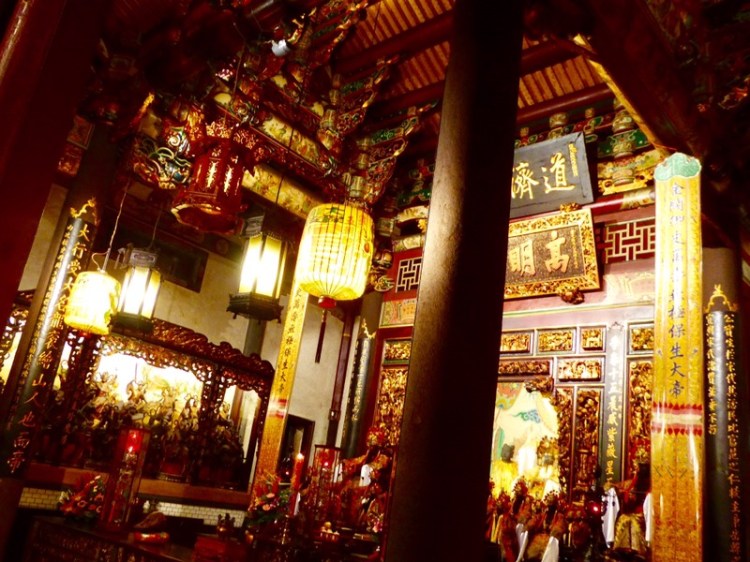




Baoan was even more stunning. A few more people about, mostly worshipping, lighting candles and taking part in drum practice. I am glad we visited at night as it was really atmospheric.
National Palace Museum
The most visited of all the attractions in Taiwan, welcoming some 2 million people through its doors each year. It is home to an unparalleled collection of priceless Chinese art going back five thousand years. I dare say that if ever the contents were auctioned off, the Taiwanese could use the proceeds to buy a few medium sized countries.
The artefacts are a legacy of Chiang Kai-shek’s retreat from mainland China in 1949 when he had shipped the Imperial art collection , crate by crate, across the Taiwan straits. Apparently there are over 650,000 artefacts in the museum, including Ming and just about every other imperial dynasty one could think of.
Rumour has it that the Chinese government are still none too pleased about it and would really like their stuff back!
Only a fraction of the collection is on display at anyone time. We have collected a few pieces of jade from our travels over the years, but this is just mind blowing in terms of variety, quality colour etc.
We spent the entire morning wandering the three floors of the museum. Keen students of Chinese history could probably spend days here without getting bored.
One of the key exhibits here is a jade cabbage. England, may have its rose, Wales its leek, Ireland its Shamrock, but Taiwan’s national vegetable apparently is the cabbage!
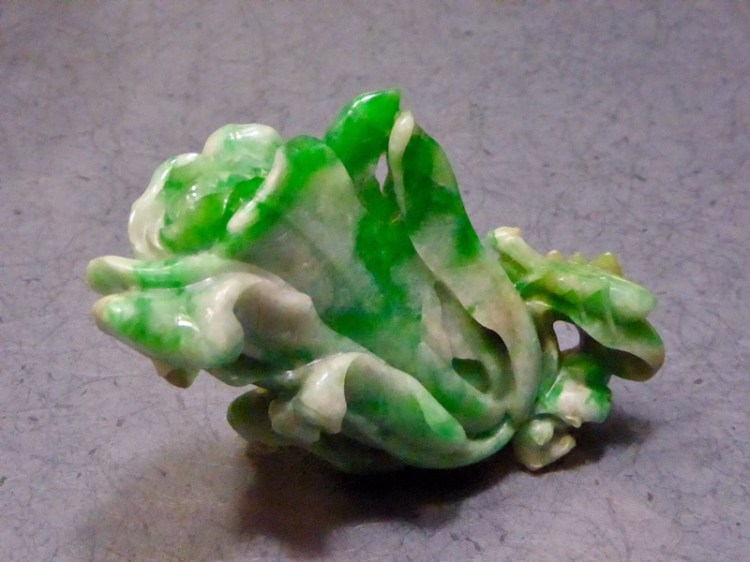
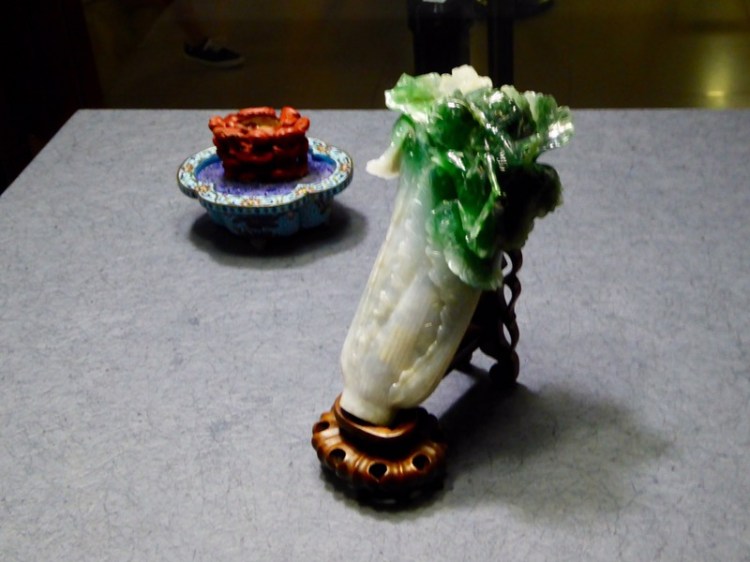
Apparently the cabbage is so revered by the Chinese because in the Chinese language it sound like the words for “hundred” and “wealth”. Superstition being the national pastime, it is no great leap to put the two together and see that the cabbage equates to hundreds of years of wealth! Tell that to the kids next time they won’t eat their greens!
Understandably, cabbages are a big thing here. The gift shop sells thousands of cabbages in many forms; brooches, paperweights, key rings, you name it!
This was one of the few places we could not get to by MRT alone. We needed to change from the MRT to the bus which took us right to the entrance. Simple enough but our fellow passengers seemed bemused to see westerners on their bus.
Taipei 101
Once the world’s tallest building, it has now been overtaken several times and is now the eighth tallest. Apparently designed to resemble a giant stand of bamboo, it is an impressive sight towering over the city.
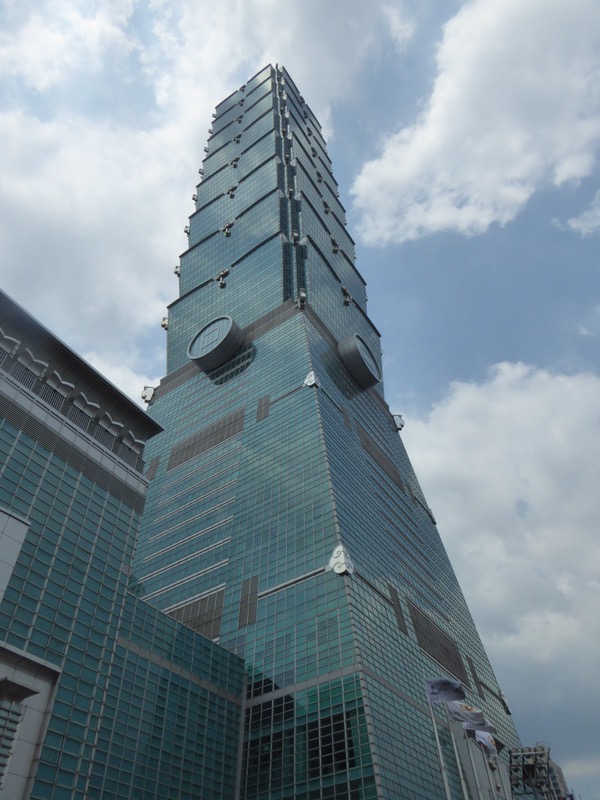
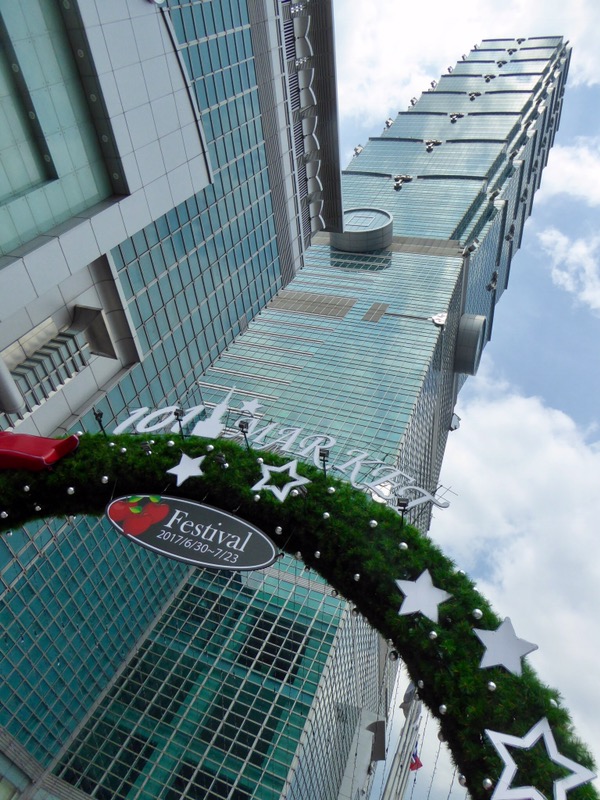
On our way in to buy our tickets, we were distracted by the Taiwan outlet of “Din Tai Fung” that shrine to the Chinese culinary delights that are dim sum! Unable to resist we diverted for an early lunch and gorged on a selection of sublime dumplings.
Carolyn went to take a few photos of the chefs in action in the glass fronted kitchen and was treated to a 20 minute explanation of how the dumpling as are made, the exacting standards that are applied and the intense trading the chefs undergo.


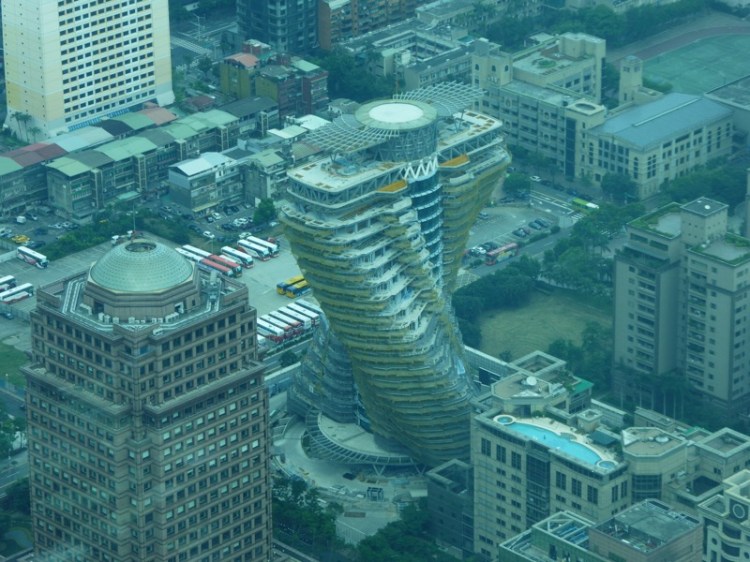
After a dumpling overload we buy our tickets and make our way to the elevator takes around 37 second to whizz us up 90 floors to the observation deck. We were lucky with the views as we had a reasonably clear day. Everything, even 30 storey buildings looked really tiny from up here. The cars on the roads looked like lines of ants!
Maokong Cable Car and Tea plantations
For our final day in Taipei, we decided to take the MRT to the southernmost reaches of the city to take a kilometre cable car ride up to the tea plantations of Maokong.
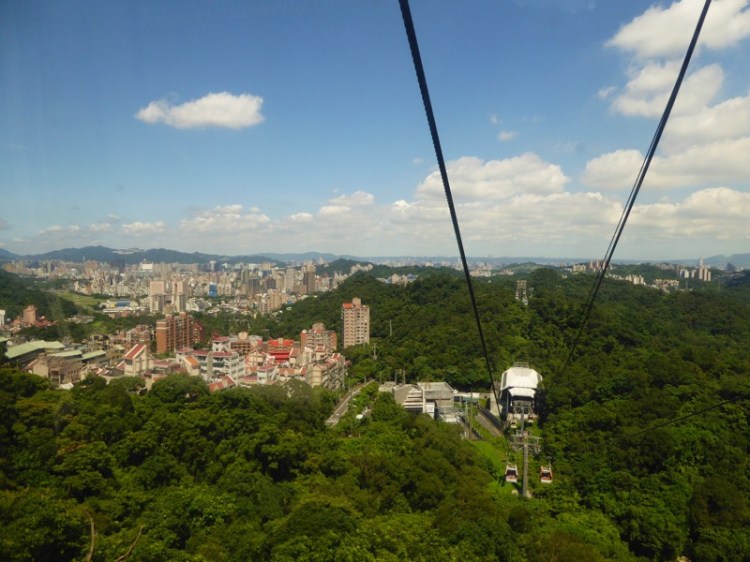

We chose to ride the cable car on a Monday morning, avoiding the crowds at the weekend when apparently the wait to board a cable car can be three hours. We managed to get on one right away.
We waited a minute or two for a “crystal” car – basically a normal car but with a clear plastic floor for enhanced viewing pleasure!
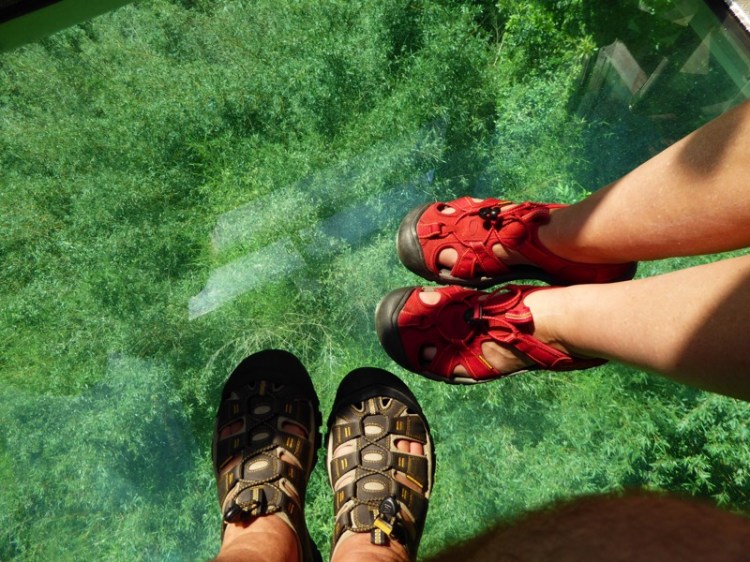
We took a pleasant, but very hot walk around the hills above Taipei but saw very little of the Oolong tea for which Maokong is famed. The views of Taipei below are quite stunning and provide a great perspective of this mountain-ringed city.
Taipei Zoo
Returning by cable car we alighted at Taipei zoo. Not a great fan of zoos for all sorts of reasons, but this one apparently does do some good work in the field of conservation. It is also home to some giant pandas on loan from China.
A great bird enclosure with some weird and wonderful inmates. Elephants, leopards, Orang-utans even a couple of camels.
Unfortunately, whilst the cable car is only open on a Monday on the first Monday in every month, that is the day the Pandas are given a day off so we missed seeing them!
Taiwan was a totally new destination for us and we weren’t too sure how we would like it, hence the short stay. As it turns out it has been one of our favourite places in Asia and we really wished we had stayed longer.
Planning our trip here was a little problematic as there didn’t seem to be much detailed information around. We used the Rough Guides Taiwan guidebook. By far the most useful source of information was an expat American living in Taiwan. Crystine and her husband run the http://www.discovertaiwanadventures.com website loads of useful information there and Crystine and I exchanged a lot of emails in the run up to our visit and her assistance was invaluable.





























Really enjoyed the account. I bet you will return! Amazing photos.
Glad you enjoyed! I am sure we will return before too long.
Glad you had a good time. Definitely worth a second visit.
No doubt we will, especially as it en- route to our sons in Sydney makes a change from the usual LHR -BKK-SYD route.
You packed in more than we managed with our 3 nights in Taipei. We had started with the two nights in Taroko and I crippled myself somewhat by doing much more walking than my body can handle so had to take it a bit easier in Taipei. But we did love the night markets and the gondola to maokong!